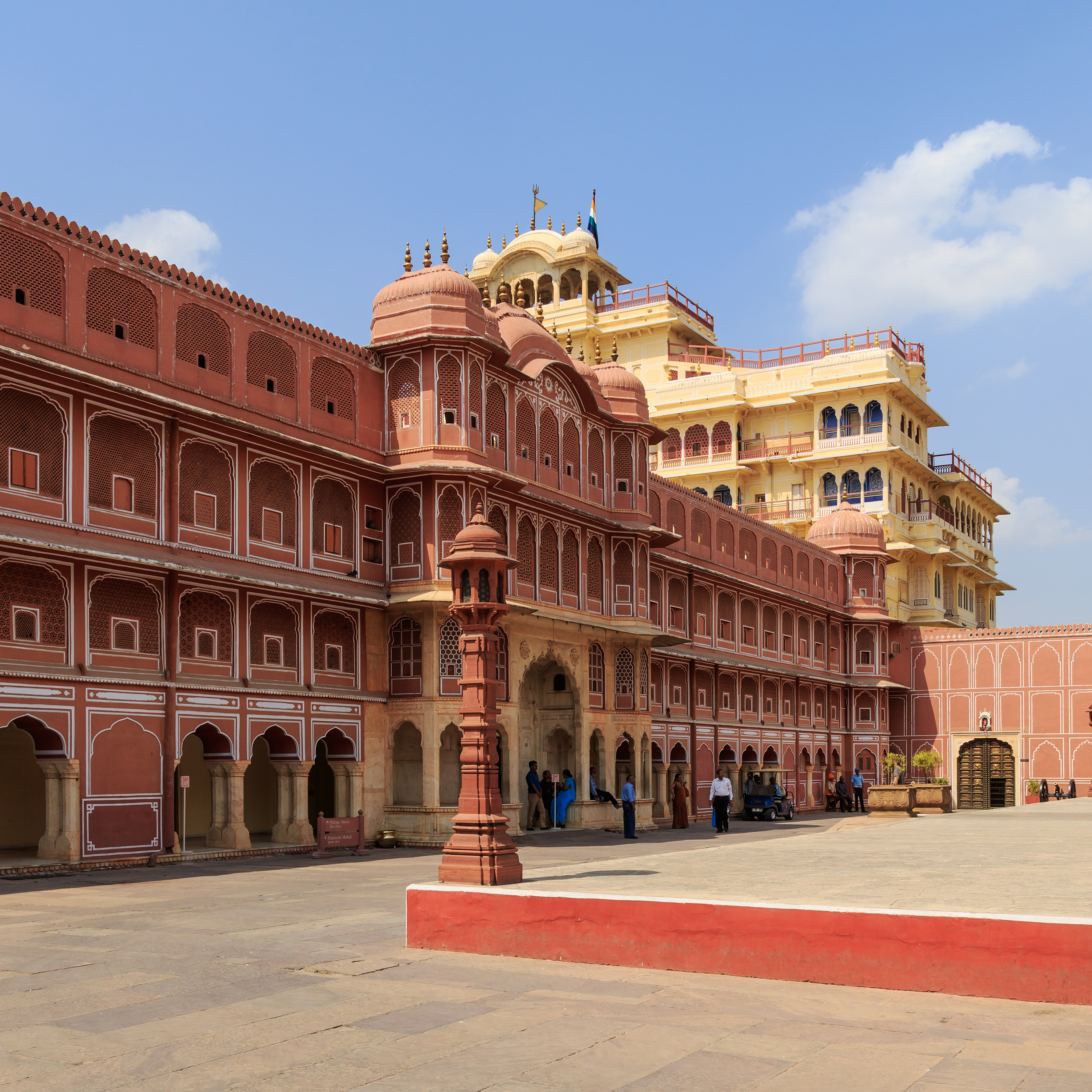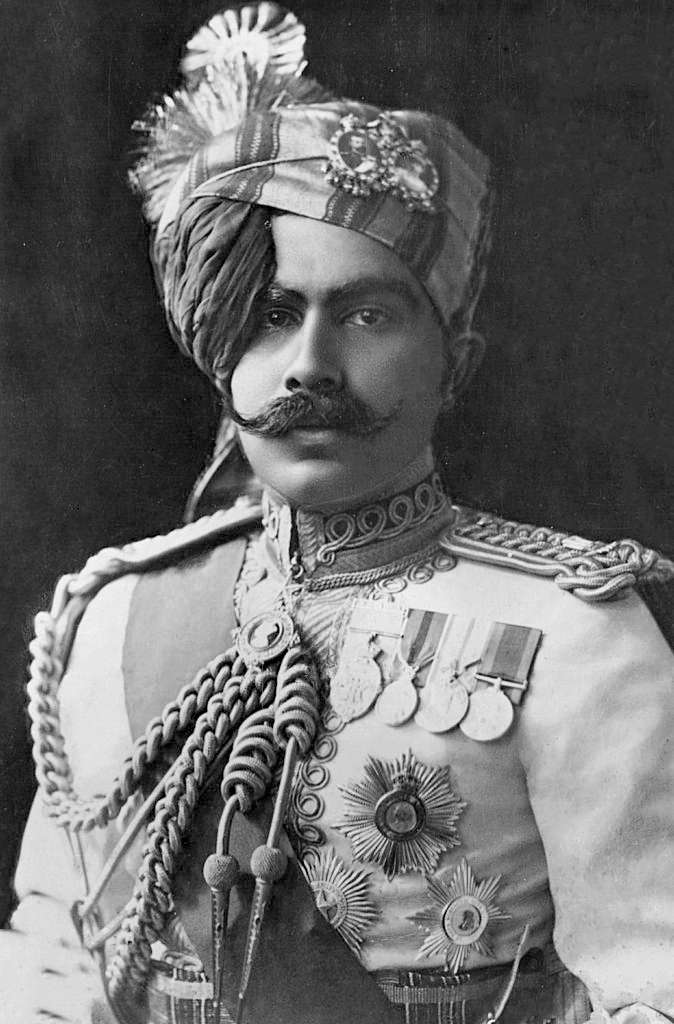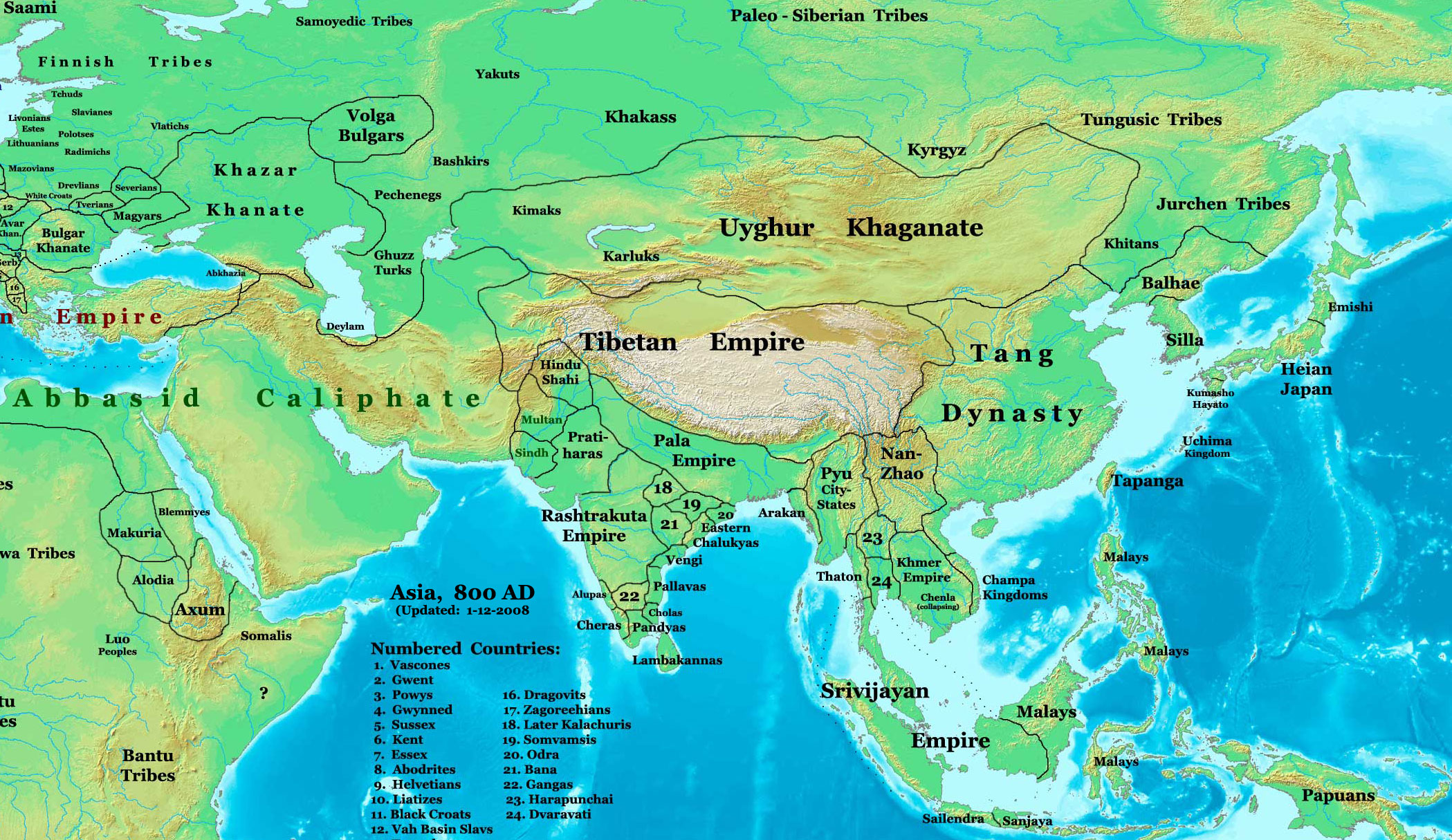|
Rajputána
Rājputana (), meaning Land of the Rajputs, was a region in the Indian subcontinent that included mainly the entire present-day Indian state of Rajasthan, parts of the neighboring states of Madhya Pradesh and Gujarat, and adjoining areas of Sindh in modern-day southern Pakistan. The main settlements to the west of the Aravalli Hills came to be known as ''Rajputana'', early in the Medieval Period. The name was later adopted by East India Company as the Rajputana Agency for its dependencies in the region of the present-day Indian state of Rājasthān. The Rajputana Agency included 26 Rajput and 2 Jat princely states and two chiefships. This official term remained until its replacement by "Rajasthan" in the constitution of 1949. Name George Thomas (''Military Memories'') was the first in 1800, to term this region the ''Rajputana Agency''. The historian John Keay in his book, ''India: A History'', stated that the ''Rajputana'' name was coined by the British, but that the word ach ... [...More Info...] [...Related Items...] OR: [Wikipedia] [Google] [Baidu] |
John Keay
John Stanley Melville Keay FRGS (born 1941) is a British historian, journalist, radio presenter and lecturer specialising in popular histories of India, the Far East and China, often with a particular focus on their colonisation and exploration by Europeans. In particular, he is widely seen as a pre-eminent historian of British India. He is known both for stylistic flair and meticulous research into archival primary sources, including centuries-old unpublished sources. The author of some twenty-five books, he also writes regularly for a number of prominent publications in Britain and Asia. He began his career with ''The Economist''. He has received several major honours including the Sir Percy Sykes Memorial Medal. In 2019, he received an honorary doctorate, presented by Princess Anne, from the University of the Highlands and Islands in Scotland. ''The Economist'' has called him "a gifted non-academic historian", the '' Yorkshire Post'' has called him "one of our most o ... [...More Info...] [...Related Items...] OR: [Wikipedia] [Google] [Baidu] |
List Of Rajput Dynasties And States
During the medieval and later feudal/ colonial periods, many parts of the Indian subcontinent were ruled as sovereign or princely states by various dynasties of Rajputs. The Rajputs rose to political prominence after the large empires of ancient India broke into smaller ones. The Rajputs became prominent in the early medieval period in about seventh century and dominated in regions now known as Rajasthan, Delhi, Haryana, Western Gangetic plains and Bundelkhand. However, the term "Rajput" has been used as an anachronistic designation for Hindu dynasties before the 16th century because the Rajput identity for a lineage did not exist before this time, and these lineages were classified as aristocratic Rajput clans in the later times. Thus, the term "Rajput" does not occur in Muslim sources before the 16th century. List Following is the list of those ruling Rajput dynasties of the Indian Subcontinent: * Kachhwahas of Jaipur, Alwar, Lawa, Kohra and Maihar * Sisodias of Me ... [...More Info...] [...Related Items...] OR: [Wikipedia] [Google] [Baidu] |
Udaipur
Udaipur (Hindi: , ) (ISO 15919: ''Udayapura'') is a city in the north-western Indian state of Rajasthan, about south of the state capital Jaipur. It serves as the administrative headquarters of Udaipur district. It is the historic capital of the kingdom of Mewar in the former Rajputana Agency. It was founded in 1559 by Udai Singh II of the Sisodia Dynasty, Sisodia clan of List of Rajput dynasties and states, Rajputs, when he shifted his capital from the city of Chittorgarh to Udaipur after Chittorgarh was besieged by Akbar. It remained as the capital city till 1818 when Mewar became a British Raj, British princely state, and thereafter the Mewar province became a part of Rajasthan when India gained Indian Independence Act 1947, independence in 1947. It is also known as the ''City of Lakes,'' as it is surrounded by Udaipur City's Five lakes, five major artificial lakes. The city is located in the southernmost part of Rajasthan, near the Gujarat border. To its west is the Aravali ... [...More Info...] [...Related Items...] OR: [Wikipedia] [Google] [Baidu] |
Jaipur
Jaipur (; , ) is the List of state and union territory capitals in India, capital and the List of cities and towns in Rajasthan, largest city of the north-western States and union territories of India, Indian state of Rajasthan. , the city had a population of 3.1 million, making it the List of cities in India by population, tenth most populous city in the country. Located from the national capital New Delhi, Jaipur is also known as the ''Pink City'' due to the dominant color scheme of its buildings in the old city. Jaipur was founded in 1727 by Sawai Jai Singh, Sawai Jai Singh II, the Kachhwaha, Kachhwaha Rajput ruler of Amer, India, Amer, after whom the city is named. It is one of the earliest planned cities of modern India, designed by Vidyadhar Bhattacharya. During the British Raj, British colonial period, the city served as the capital of Jaipur State. After Independence of India, Indian independence in 1947, Jaipur became the capital of the newly formed state of Rajas ... [...More Info...] [...Related Items...] OR: [Wikipedia] [Google] [Baidu] |
Bikaner
Bikaner () is a city in the northwest of the States and territories of India, state of Rajasthan, India. It is located northwest of the state capital, Jaipur. It is the administrative headquarters of Bikaner District and Bikaner division. Formerly the capital of the princely Bikaner State, the city was founded by Rao Bika, a Rajput Tribal chief, chief of the Rathore dynasty in 1488 CE and from its small origins it has developed into the fourth largest city in Rajasthan. The Ganga Canal (Rajasthan), Ganga Canal, completed in 1928, and the Indira Gandhi Canal, completed in 1987, facilitated its development. Etymology The name "Bikaner" is a combination of two elements: "Bika", derived from the city's founder, Rao Bika and "Ner", which is believed to mean "place" or "city" in the local Rajasthani languages, Rajasthani language. Hence, "Bikaner" translates to "the city of Bika". History file:Bikaner coat of arms.jpg, left, Bikaner coat of arms Prior to the mid 15th century, t ... [...More Info...] [...Related Items...] OR: [Wikipedia] [Google] [Baidu] |
Jaisalmer
Jaisalmer , nicknamed ''The Golden city'', is a city in the north-western Indian state of Rajasthan, located west of the state capital Jaipur, in the heart of the Thar Desert. It serves as the administrative headquarters of Jaisalmer district. It is a former medieval trading center and the historic capital of the kingdom of Jaisalmer, founded in 1156 by Rawal Jaisal of the Bhati clan of Rajputs. Jaisalmer stands on a ridge of yellowish sandstone and is crowned by the World Heritage Site, Jaisalmer Fort, a sprawling hilltop citadel supported by 99 bastions. This fort contains a royal palace and several ornate Jain temples. Many of the houses and temples of both the fort and of the town below are built of finely sculptured yellow sandstone. The town has a population, including the residents of the fort, of about 78,000. Jaisalmer ranked 9th on Booking.com's Top 10 The Most Welcoming cities in the world. It is the only Indian city on the list. Etymology Jaisalmer was founded ... [...More Info...] [...Related Items...] OR: [Wikipedia] [Google] [Baidu] |
Jodhpur
Jodhpur () is the second-largest city of the north-western Indian state of Rajasthan, after its capital Jaipur. As of 2023, the city has a population of 1.83 million. It serves as the administrative headquarters of the Jodhpur district and Jodhpur division. It is the historic capital of the Kingdom of Marwar, founded in 1459 by Rao Jodha, a Rajput chief of the Rathore clan. On 11 August 1947, 4 days prior to the Indian independence, Maharaja Hanwant Singh the last ruler of Jodhpur state signed the Instrument of Accession and merged his state in Union of India. On 30 March 1949, it became part of the newly formed state of Rajasthan, which was created after merging the states of the erstwhile Rajputana. Jodhpur is a famous tourist spot with a palace, fort, and temples, set in the stark landscape of the Thar Desert. It is also known as the 'Blue City' due to the dominant color scheme of its buildings in the old town. The old city circles the Mehrangarh Fort and is bou ... [...More Info...] [...Related Items...] OR: [Wikipedia] [Google] [Baidu] |
Ajmer-Merwara
Ajmer-Merwara (also known as Ajmir Province, and Ajmer-Merwara-Kekri) was a former province of British India in the historical Ajmer region. The territory was ceded to the British by Daulat Rao Sindhia by a treaty on 25 June 1818. It was under the Bengal Presidency until 1861 when it became part of the North-Western Provinces. Finally on 1 April 1871, it became a separate province as Ajmer-Merwara-Kekri. It became a part of independent India on 15 August 1947 when the British left India. The province consisted of the districts of Ajmer and Merwara, which were physically separated from the rest of British India forming an enclave amidst the many princely states of Rajputana. Unlike these states, which were ruled by local nobles who acknowledged British suzerainty, Ajmer-Merwara was administered directly by the British. In 1842, the two districts were under a single commissioner, then they were separated in 1856 and were administered by the East India Company. Finally, afte ... [...More Info...] [...Related Items...] OR: [Wikipedia] [Google] [Baidu] |
Rajputana States - Census Of India 1891
Rājputana (), meaning Land of the Rajputs, was a region in the Indian subcontinent that included mainly the entire present-day Indian state of Rajasthan, parts of the neighboring states of Madhya Pradesh and Gujarat, and adjoining areas of Sindh in modern-day southern Pakistan. The main settlements to the west of the Aravalli Hills came to be known as ''Rajputana'', early in the Medieval Period. The name was later adopted by East India Company as the Rajputana Agency for its dependencies in the region of the present-day Indian state of Rājasthān. The Rajputana Agency included 26 Rajput and 2 Jat princely states and two chiefships. This official term remained until its replacement by "Rajasthan" in the constitution of 1949. Name George Thomas (''Military Memories'') was the first in 1800, to term this region the ''Rajputana Agency''. The historian John Keay in his book, ''India: A History'', stated that the ''Rajputana'' name was coined by the British, but that the word ach ... [...More Info...] [...Related Items...] OR: [Wikipedia] [Google] [Baidu] |
Great Indian Desert
The Thar Desert (), also known as the Great Indian Desert, is an arid region in the north-western part of the Indian subcontinent that covers an area of in India and Pakistan. It is the world's 18th-largest desert, and the world's 9th-largest hot subtropical desert. About 85% of the Thar Desert is in India, and about 15% is in Pakistan. The Thar Desert is about 4.56% of the total geographical area of India. More than 60% of the desert lies in the Indian state of Rajasthan; the portion in India also extends into Gujarat, Punjab, and Haryana. The portion in Pakistan extends into the provinces of Sindh and Punjab (the portion in the latter province is referred to as the Cholistan Desert). The Indo-Gangetic Plain lies to the north, west and northeast of the Thar desert, the Rann of Kutch lies to its south, and the Aravali Range borders the desert to the east. The most recent paleontological discovery in 2023 from the Thar Desert in India, dating back to 167 million years ago, ... [...More Info...] [...Related Items...] OR: [Wikipedia] [Google] [Baidu] |
Muslim
Muslims () are people who adhere to Islam, a Monotheism, monotheistic religion belonging to the Abrahamic religions, Abrahamic tradition. They consider the Quran, the foundational religious text of Islam, to be the verbatim word of the God in Abrahamic religions, God of Abraham (or ''Allah'') as it was revealed to Muhammad, the last Islamic prophet. Alongside the Quran, Muslims also believe in previous Islamic holy books, revelations, such as the Tawrat (Torah), the Zabur (Psalms), and the Injeel (Gospel). These earlier revelations are associated with Judaism and Christianity, which are regarded by Muslims as earlier versions of Islam. The majority of Muslims also follow the teachings and practices attributed to Muhammad (''sunnah'') as recorded in traditional accounts (hadith). With an estimated population of almost 2 billion followers, Muslims comprise around 26% of the world's total population. In descending order, the percentage of people who identify as Muslims on each ... [...More Info...] [...Related Items...] OR: [Wikipedia] [Google] [Baidu] |








